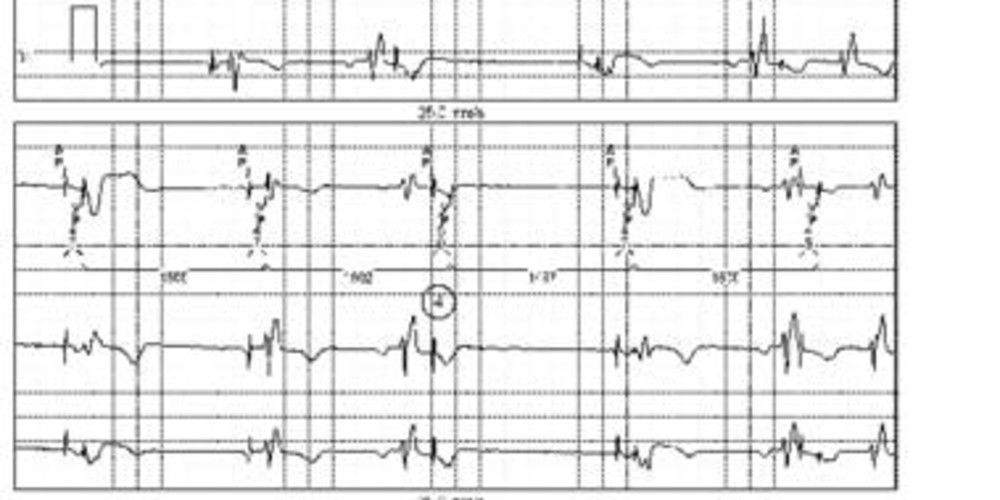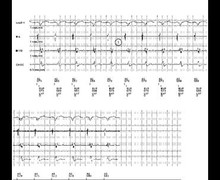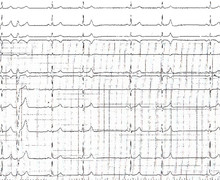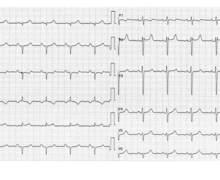Asynchronous modes
Tracing
Manufacturer Medtronic
Device PM
Field Pacing Modes
N° 2
Patient
Same patient as in tracing 1.

Graph and trace
Programming in DOO mode 40 beats/minute;
- atrioventricular pacing; fusion pattern between spontaneous ventricular activation and paced ventricular activation;
- atrioventricular pacing with effective and complete capture (AP-VP);
- absence of sensing of the atrium and the ventricle with ineffective asynchronous atrioventricular pacing, being in the refractory period of the atrium and the ventricle;
- new asynchronous atrioventricular pacing; the ventricular stimulus occurs at the peak of the T wave in a vulnerable ventricular period without capture.
Other articles that may be of interest to you







Fixed-rate asynchronous modes were the only modes available on early pacemaker models. The DOO mode induces asynchronous atrioventricular sequential pacing, without inhibition by intrinsic events. As seen on this tracing, when the patient is not pacemaker-dependent, parasystole occurs with competition between spontaneous activity and paced activity. This mode enables verifying the effectiveness of the pacing and avoiding inhibition in case of exposure to external interference (electric scalpel in a pacemaker-dependent patient for example). Pacing is effective and captures the atrium or ventricle only when occurring outside the absolute physiological refractory period following a spontaneous atrial or ventricular activity.
This tracing shows the risk of this type of mode. Several ventricular stimuli occur at the peak of the T wave of an undetected spontaneous QRS. This is the vulnerable period with risk of induction of a ventricular rhythm disorder. The risk of ventricular fibrillation is limited although increases in the presence of myocardial ischemia or metabolic disorder. Similarly, asynchronous atrial pacing in the atrial vulnerable period can induce atrial fibrillation.
Asynchronous modes are now obsolete and are only used in 2 specific circumstances: